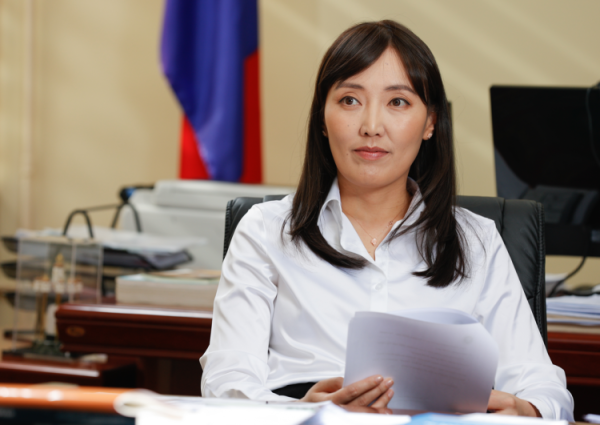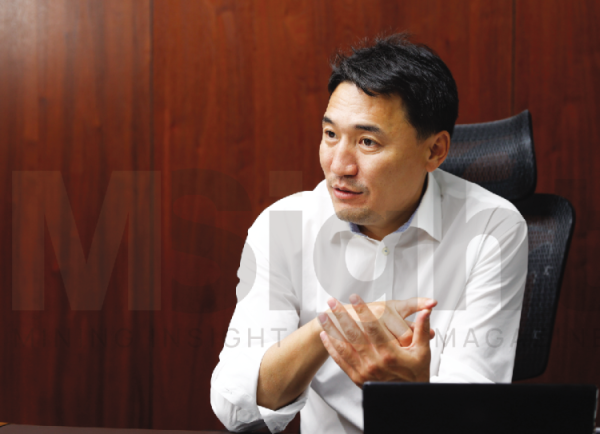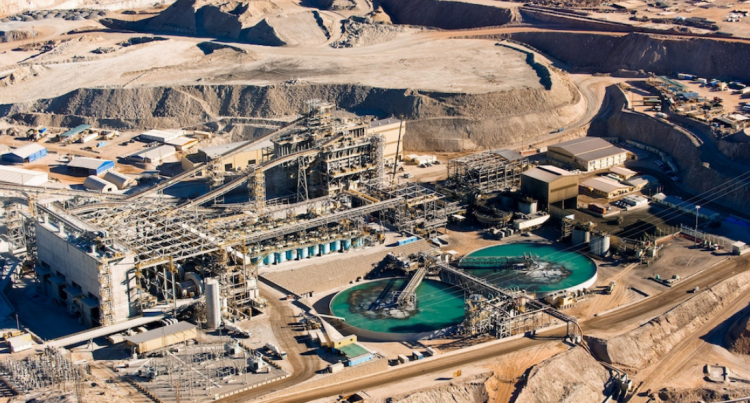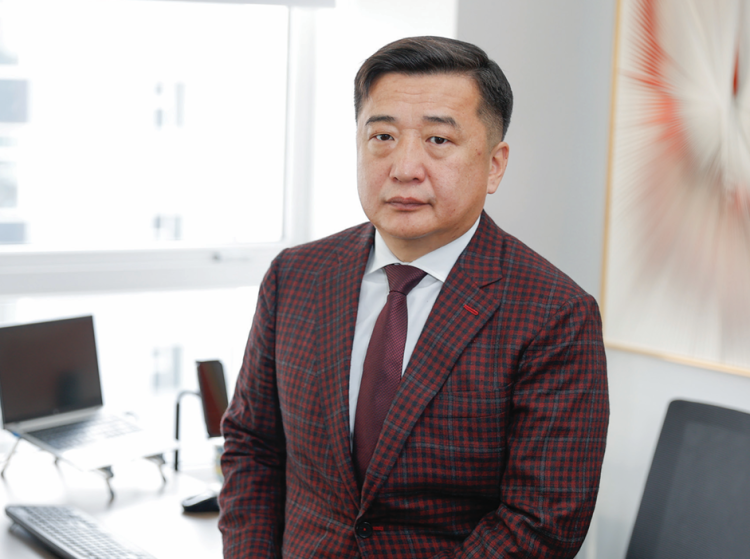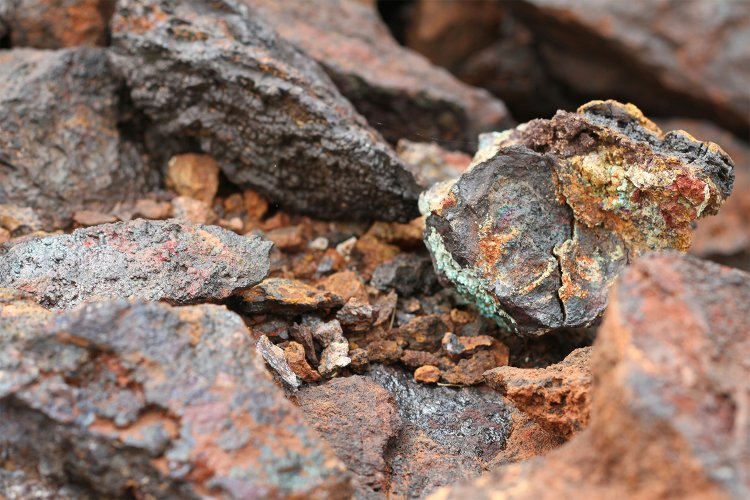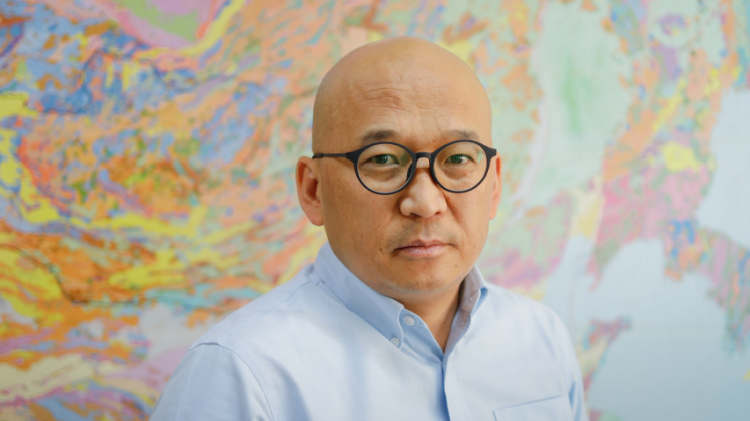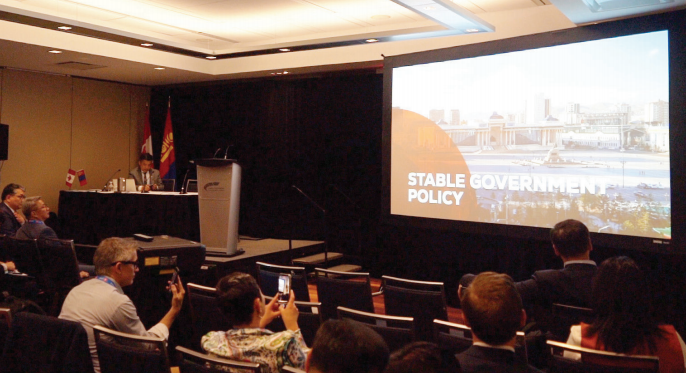
ODJARGAL.E
od@mininginsight.mnMongolia announced its ambition to become a reliable supplier and active player of critical minerals at recent PDAC 2022 Convention, highlighting its opportunities of types of minerals and geological features to keep pace with the mining industry trends of new era driven by global green revolution. PDAC 2022 has become the largest gathering of international investors in which Mongolia took part since the country approved “Vision – 2050” long term development policy and “New Revival” policy. The 90th annual convention served as an important platform for Mongolia’s aspiration to attract foreign investment and promote its new development policy to an international audience.
The PDAC 2022 agenda focused on themes surrounding the countries that could supply critical and strategic minerals required for clean energy production to combat against climate change and for green economy and technological advancement.
It is now obvious that the consumption of copper, nickel, lithium, cobalt and rare-earth elements are to constantly rise in coming future. Mongolia is an exporter of mineral commodities, and the new mining trends are pushing the country to coordinate its exploration and production in line with demands and to multiply the types of commodities. “Mongolia has embarked on the process to develop its mining industry as an environmentally friendly, encompassing all stakeholders and that meets ESG mining standard” noted G.Yondon, Minister of Mining and Heavy Industry. “While expanding its copper production, Mongolia will promote exploration of raw materials, rare minerals as well as other critical minerals for green transition, and seek tie-ups with consumer countries at government level” announced Minister Yondon from the stage of the PDAC Mongolia event.
A presentation by the Mining Ministry of Mongolia showed Mongolia’s great geological potential that discovery of more deposits of critical minerals – more Oyu Tolgoi deposits – are quite likely. A collection of geological data at 1:50 000 scale maps of Mongolian territory is 40 percent complete by now, identifying deposits containing an estimated 57 million tons of copper, 33.2 billion tons of mostly metallurgical coal, 490 tons of gold and 1.2 billion of iron ore. Although nearly 40 percent of the country’s territory has been covered by geological prospecting, only 1 percent of the territory is subject to mining licenses. That is to say, Mongolia is a new location for geological explorations, explained B.Uyanga, Director General of the Geological Policy Department of the Ministry of Mining and Heavy Industry, by comparing Mongolia with China, Russia and Australia. Foreign and national experts and scholars emphasize that Mongolia holds ample opportunities in metals, such as lithium, cobalt and nickel used in battery in addition to gold, copper and iron commodities.
A crucial area of Central Asia’s mineral reserves passes through the territory of Mongolia, the country with future prospects of big discoveries of mineral resources – rare earth minerals, critical minerals, copper and gold. Promising projects with high geological and mineral capability that are situated across the mineral resources zone in Mongolia attracted the attention during PDAC Mongolia event.
These projects present in themselves each and every stage of the mineral industry development for the last three decades, from mineral prospecting to manufacturing process. Among them are export expansion projects or major deposits with competitive edge on global market. For instance, Oyu Tolgoi project has launched its open pit and underground production amid copper resource depletion and declining global copper production. “While the global mining industry focus is on copper, Mongolia now has two world class copper mines. Erdenet Mine Corporation has been successfully operating for over 40 years until today. The other one, one of the largest known copper deposits in the world Oyu Tolgoi is globally recognized for its modern, safe and sustainable operations. The mine has recently marked its 10th anniversary of copper production. Oyu Tolgoi project is a proof that Mongolia is ready for business. Mongolian copper will not only reinforce the country’s growth and prosperity, but also will contribute to the global sustainable development” said E.Lkhagva, General Manager, External Affairs and Communications in his presentation. He conveyed a video greeting from Deirdr Lingenfelder, Oyu Tolgoi CEO, during the event. International investors pay close attention on Oyu Tolgoi for the reason that the project is invested by the “west”. In her greeting, Oyu Tolgoi CEO mentioned that the government of Mongolia and Rio Tinto Group have reached mutual agreement after successful negotiations, delivering a positive message to investors about Mongolia’s close and fruitful cooperation with international investors. Mongolia has emerged as a big player on global copper market. With the commencement of Oyu Tolgoi underground mine, Oyu Tolgoi’s annual copper production is expected to triple, bringing Mongolia’s copper exports to $4-5 billion. “If we provide the necessary support to advance ready projects, Mongolia’s copper production growth is achievable” said G.Dagva, Advisor to Minister of Mining and Heavy Industry, who moderated the event. Xanadu Mines is a company developing two other significant projects in copper production at an exploration stage. Last year, the company spent $36 million for explorations works and plans to invest $41 million in coming 18 months. The first stage of exploration of the “Ulaan uul” project in Dornogobi aimag is completed and their main project at “Kharmagtai” is found to contain 1.1 billion of tons of gold-copper ore deposit.
As the estimated deposit is forecasted to grow, additional drilling will be carried out, according to Colin Moorhead, Executive Chairman and Managing Director of Xanadu Mines. The company entered into strategic partnership with China’s Zijin Mining for the project development, and he further says “We have sold the company’s 9.9 percent stake at price higher than market price in the first place, and during the second phase, we will bump up Zijin Mining’s shares in ownership to 19.9 percent to allow them to invest further $35 million into the project as per shareholders’ permission”. The deal raises “Kharmagtai” project’s value to $92 million. The proven reserves and a decision to inaugurate exploration are to be announced in 2023. The mining development requires three years and has the potential to operate for 90 years. The ongoing railway construction located near the project site bring impetus to ensure complete production infrastructure for the project. A preliminary technical and economic feasibility study will be finalized by the second half of this year. The project has a total investment of $630 million. According to S&P Market Intelligence, Kharmagtai, one of the largest untapped copper-gold deposits owned by junior companies, is ranked seventh in the world by its reserves. L.Ganbayar, Executive Director of Xanadu Mines in Mongolia and Andrew Stewart, Vice President Exploration took part in the event. Gold industry once took the burden of the country’s economy and still plays a key role. Gold price has increased during the coronavirus pandemic, making a $1 billion industry. “Erdene Resource Development” and “Steppe Gold” companies introduced about opportunities to double the gold industry revenue with their projects. Peter Akerley, President of “Erdene Resource Development” that made an impressive discovery in the southwestern region of Mongolia in the past decade said “Discovery of that content of open pit gold deposit is almost unheard of in today’s world. This area belongs to the Central Asian geological region that runs to southern Mongolia. Global average gold concentration is 1.3 grams per ton, whereas we have found reserves with three times higher in gold content. Our total investment for exploration in the last 10 years has already reached $6 million.” Today three of the company’s projects are under exploration stage.
Their principal project Bayan Khundii has a reserve of over 400,000 ounces at an average head grade of 3.7 g/t gold. At their neighboring project at “Ulaan”, 8.1 g/t is encountered over 3 meters by drill results until now. The total gold reserves of the projects are targeted to reach 2 million ounces. Launched their exploration from 2020, Steppe Gold company is Asia’s new producer of gold and silver. The company is operating Altan Tsagaan Ovoo gold and silver project, located in the territory of Dornod aimag in eastern Mongolia and comprising 1.39 million ounces of gold and 20.48 million ounces of silver. $60 million of investment is approved out of total $130 million for the production stage 2 expansion, which is expected to continue for two years. A new “Silver” project is under development. A mining license for the largest gold deposit in Bayankhongor aimag is owned by Steppe Gold. The deposit is situated between Erdene Resource’s “Bayan Khundii” and “Altan Nar” project fields. “Drilling is scheduled to start in June”, notes Aneel Waraich, Executive Vice President and Director of Steppe Gold. The PDAC Mongolia event also witnessed presentations by two main coal producers of Mongolia, representing both public and private sectors operating at Tavantolgoi coal deposits. While global green transition to address climate change is causing an impact on energy coal, metallurgical coal holds a different scenario. Last year, China’s steel production expanded by 24 percent. Mongolia leads Canada, Russia, Australia and the U.S. with its supply to China’s market - top consumer of coking coal, which is a vital ingredient in steel making. China is a huge market. The consumption differs from region to region. The correct way to describe is the market sharing among regions, not a competition. G.Battsengel, CEO at Energy Resources, views that coking coal demand by this immense market is unlikely to fall for the next few years. Mineral competitiveness is highly dependent upon infrastructure. Erdenes Tavantolgoi company has financed two railway projects that are directly linked to Mongolia’s principal exports market with the aim of advancing local mining infrastructure. Railways connecting border check points with major deposits are expected to start commissioning within this year. In accordance with the government decision, a structural change has been made at Erdenes Mongol company and the coal and energy group has been set up. Erdenes Tavantolgoi, a subsidiary of the Erdenes Mongol group, introduced some of their large development projects through 2025, such as development of power plant, water supply, Erdenes city in mining regions. Incidentally, a “hot topic” backstage at the PDAC 2022 was about coal. Investors were “whispering” to each other that the world quitting coal is not easy due to changes in commodity market and supply chain, energy crisis across countries and current geopolitical situation. Some lithium projects – pioneers in Mongolia’s critical mineral production - are underway at their exploration stages.
A significant lithium discovery was made at around 25 percent of 81,000-hectare “Baavgai Uul” project field, located in Sukhbaatar aimag, within 23 km from Mongolia-China border. The operator ION Energy owned its second lithium project “Urgakh Naran” in the past year, which covers 29 ha land in Dornogobi aimag. A brine sample from the project site assayed 918 mg/l Li, the highest-grade lithium brine known to have been collected in Mongolia. ION Energy CEO Ali Haji said that the $4 million they have at the company by the full year result of the previous year is enough for the next 2 years of exploration programs. Thanks to the foreign investment or ION Energy, Mongolia’s key metal industry is coming into play. Why invest in Mongolia? The advantages of Mongolia, bordering with the world’s largest consumer of commodities, is defined as an emerging economy with young population made up of active labor force and undiscovered mineral resources and that is about to kick off major mining infrastructure projects. That is why the country is welcoming private investment for minerals exploration. A rule on selecting and granting exploration licenses by the Ministry of Mining and Heavy Industry has been revised and 3-millionhectare land has been made available nationwide for bidding. The bidding on license will take place in online transparent format. The license application processing time which formerly took around a month will be reduced to about 10 days and geological data will be posted online in English in order to ensure accessibility. Furthermore, the Ministry of Mining and Heavy Industry is updating the regulatory framework with a view to create investmentfriendly and favorable business environment and has developed draft revisions of core legislations, including Law on Minerals, Law on Sovereign Wealth Fund and Law on Minerals Commodity Exchange.
For example, the revision in the Law on Minerals contains regulations regarding the key or critical minerals and to rearrange Erdenes Mongol as a development fund with a state-owned mining holding company format. Once the law changes are approved, more pleasant environment for foreign and domesticinvested mining projects are anticipated along with better public perception of mining and accumulation of funds into the wealth fund to result in the establishment of a mechanism for equal allocation of natural resource wealth to each citizen. The government views that its commitment to make public service online nationwide will benefit businesses. On the other hand, the most pressing concern by investors is a stable governance. MP G.Damdinnyam who heads a Mining Lobby Group in Mongolian parliament shared that the parliament is working to make amendments to the Constitution toward this goal. He noted his commitment to make sure that the business environment is safe and stable. One of the biggest foreign investors in Mongolia, Canada is considered as Mongolia’s third neighbor and is responsible for 26 percent of the foreign direct investment in Mongolia’s mining industry, which accounts for 1 in each 4 dollars. Foreign Investment Promotion and Protection Agreement (FIPA), established in 2017, is a concrete example for cooperation between the two countries. Canada’s mining exploration sector with history dating back 200 years plays an important role in its current development. Ya.Ariunbold, Ambassador of Mongolia to Canada, highlighted that this event opens up an opportunity to learn from Canada’s experience and deepen Mongolia-Canada bilateral cooperation. More than 100 guests gathered for the PDAC Mongoliа event. Regardless of how big or small they are, all countries strive to exhibit their advantages and all new and remarkable what they have to foreign investors during any international events, despite the extent.
At PDAC 2022, Mongolia shared its ambition to become a supplier of critical minerals together with countries of highly developed mining industry. Mongolian representatives composed of parliament members, delegates of government ministries and agency, business organizations, professional associations and unions, companies and media organizations worked in the city of Toronto to promote Mongolia’s minerals industry at the convention that brought together investors from world countries. During the trip to Canada, G.Yondon, Minister of Mining and Heavy Industry, held meetings with a number of officials. He met with Alex Christopher, President of the Prospectors and Developers Association of Canada (PDAC) and exchanged letters on the occasion of the 100th anniversary of Mongolia’s mining industry and PDAC’s 90th anniversary. At his meeting with Yvonne Jones, Parliamentary Secretary to the Minister of Natural Resources of Canada, Minister Yondon pointed out about Oyu Tolgoi, which is involved by the Export Development Canada and Canadian Imperial Bank of Commerce, and that the open pit mine is running smoothly and underground mine production is planned in 2023.
Together with the Chairman of the Mongolian National Chamber of Commerce and Industry and executives from “Erdenes Tavantolgoi” and “Energy Resources”, the Minister visited the Toronto Stock Exchange and met with Dean McPherson, head of global mining for Toronto Stock Exchange to talk about future training and services for Mongolia companies at the Toronto Stock Exchange. Moreover, topics concerning the mining cooperation between Mongolia and Chile, in particular, research on copper concentrate technology and possibilities for future cooperation were touched upon during his meeting with Willy Kracht Gajardo, Secretary of State of the Ministry of Mining of the Republic of Chile. The Minister emphasized that a memorandum of understanding has been made between the mining ministries between Mongolia and Chile, which is significant for exchanging information on rules and procedures on copper concentrate and its operations, improving legal framework on minerals industry, collaboration on discovery of minerals deposits and providing support for companies and organizations of two nations. Mongolia has proposed a plan to diversify its economy and become one of the leading countries in the happiness index by promoting green growth in the next 30 years. Mining is acknowledged as a pillar industry to reach this target. A comprehensive policy reform “Exploration-Extraction-Production-Sales” has been designed with the purpose of ramping the mining industry currently estimated at $6 billion up to $15-$20 billion. Mongolia’s minerals sector that has reached the age of 100 years has now arrived on the verge of its next era. In this special period, Mongolia invited investors into its mining sector at PDAC 2022 convention.




